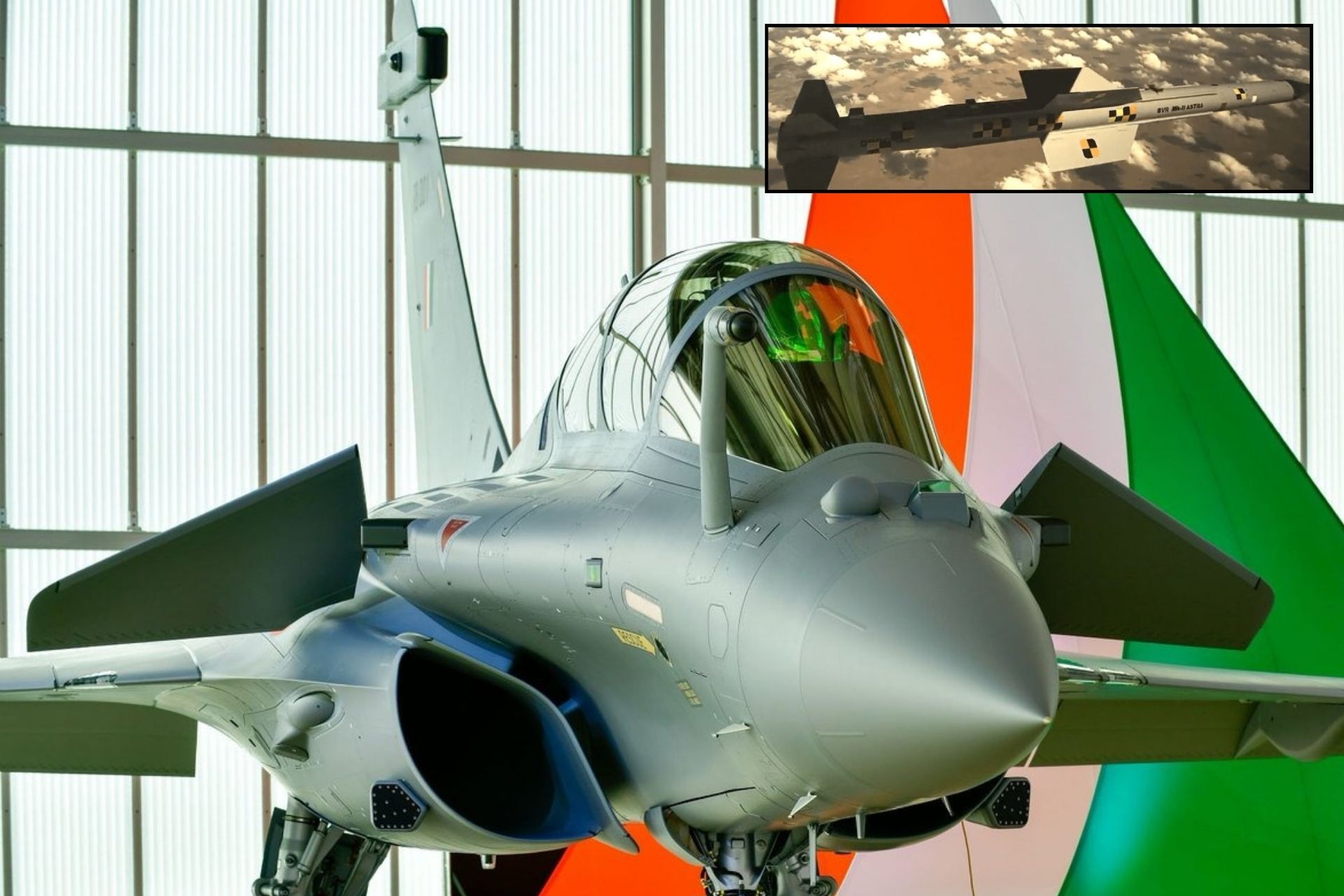Breaking News
Final Testing Phase for Astra MkII BVRAAM Missile, Soon to Be on Indian Rafale Fighter Jets?.
The Indian-developed Astra MkII air-to-air missile is nearing its final testing phase before being handed over to the Indian Air Force (IAF) for user trials. This crucial stage marks significant progress toward integrating the missile into the IAF's arsenal, where it will play a key role in strengthening the country's air defense capabilities.
Follow Army Recognition on Google News at this link

The success of these trials will enable the integration of the missile with a wide range of IAF fighters, such as the Tejas MkIA and MkII, the Su-30MKI, the Rafale, and the anticipated Advanced Medium Combat Aircraft (AMCA). (Picture source: Dassault/DRDO)
The Astra MkII has undergone a series of rigorous tests, including captive trials, separation tests, unguided dual-pulse motor tests at various ranges, and guidance tests. These tests have validated the missile's basic functions, paving the way for large-scale trials against target drones. The success of these trials will enable the integration of the missile with a wide range of IAF fighters, such as the Tejas MkIA and MkII, the Su-30MKI, the Rafale, and the anticipated Advanced Medium Combat Aircraft (AMCA).
The Tejas MkIA and MkII are part of India's Light Combat Aircraft (LCA) program, designed to replace the IAF's aging MiG aircraft. The MkIA, an improved version of the MkI, features advanced avionics, enhanced radar systems, and increased weapon-carrying capacity. Production began in the late 2010s, with initial deliveries in the early 2020s. The MkII, still in development, is expected to have a more powerful engine and enhanced capabilities. Around 40 units of the Tejas MkIA are currently in service, with more on order. Its main capabilities include air-to-air and air-to-ground missions, equipped with modern avionics, radar, and weaponry.
The Su-30MKI is a multirole combat aircraft developed by the Russian manufacturer Sukhoi, customized for India with Indian, French, and Israeli subsystems. Production began in 2000 under license by Hindustan Aeronautics Limited (HAL). The Su-30MKI entered service with the IAF in 2002, and more than 260 units are operational, making it the backbone of India's air superiority. The aircraft is capable of beyond-visual-range (BVR) combat, ground attack, and maritime strike missions. It is equipped with a powerful radar, thrust-vectoring engines, and can carry a wide range of missiles and bombs, making it one of the most versatile aircraft in the IAF.
The Rafale is a French multirole combat aircraft developed by Dassault Aviation. India signed a contract for 36 Rafales in 2016, with the first aircraft delivered in 2020. All 36 aircraft are now operational with the IAF. The Rafale is known for its versatility, capable of conducting air superiority, interdiction, reconnaissance, and nuclear strike missions. It features advanced avionics, stealth technologies, and can carry a wide range of weapons, including the BVR Meteor missile and the SCALP air-to-ground cruise missile.
The Advanced Medium Combat Aircraft (AMCA) is a fifth-generation stealth aircraft under development in India to replace the IAF's aging fighters. Still in the development phase, it is expected to feature advanced stealth capabilities, supercruise, and an internal weapons bay. Production is expected to start in the late 2020s, with the first aircraft entering service by the 2030s. The AMCA is designed for various roles, including air superiority, ground attack, and electronic warfare, and is a key part of India's future air combat strategy.
Classified in the same category as the AIM-120D Advanced Medium Range Air-to-Air Missile (AMRAAM), the Astra MkII is capable of engaging enemy aircraft at extended ranges, with a potential range of over 160 kilometers when launched from high altitudes. This places the Astra MkII on par with some of the most advanced long-range air-to-air missiles in the world.
The introduction of the Astra MkII into the IAF is expected to significantly enhance India's air defense capabilities. This missile provides a strategic and cost-effective alternative to reliance on foreign armaments. Additionally, its compatibility with a diverse fleet of fighters will increase operational flexibility and mission effectiveness.
The development of the Astra MkII highlights India's growing self-sufficiency in defense technologies. This indigenous missile reflects the country's commitment to strengthening its defense capabilities while reducing reliance on foreign weapons.


























